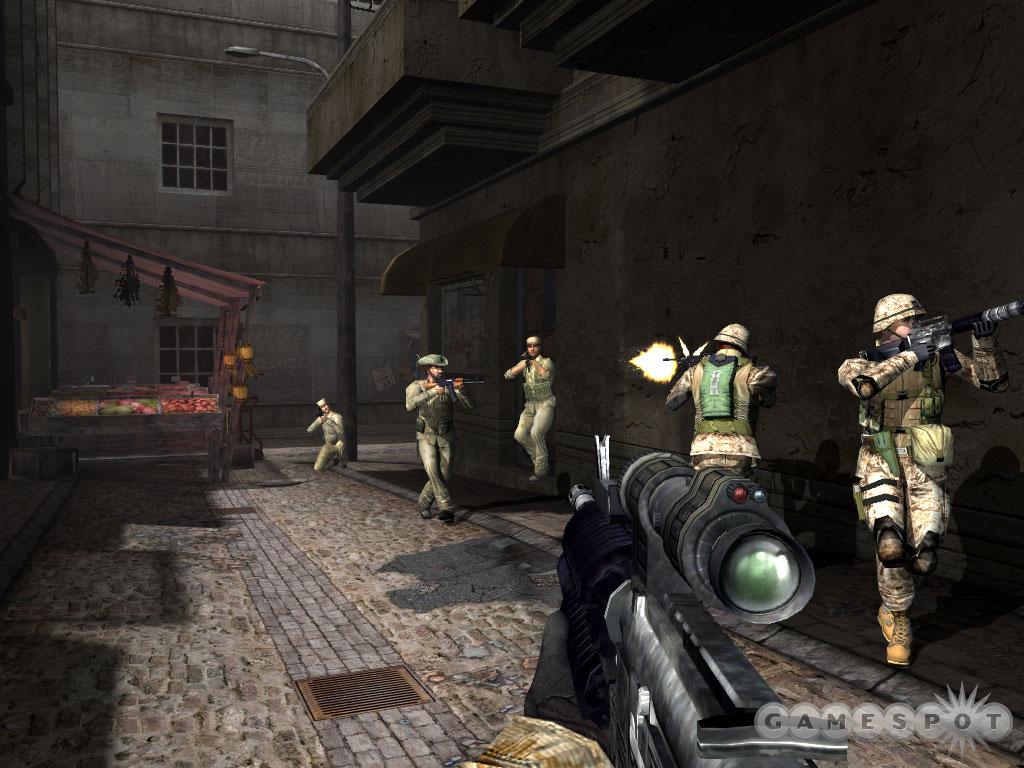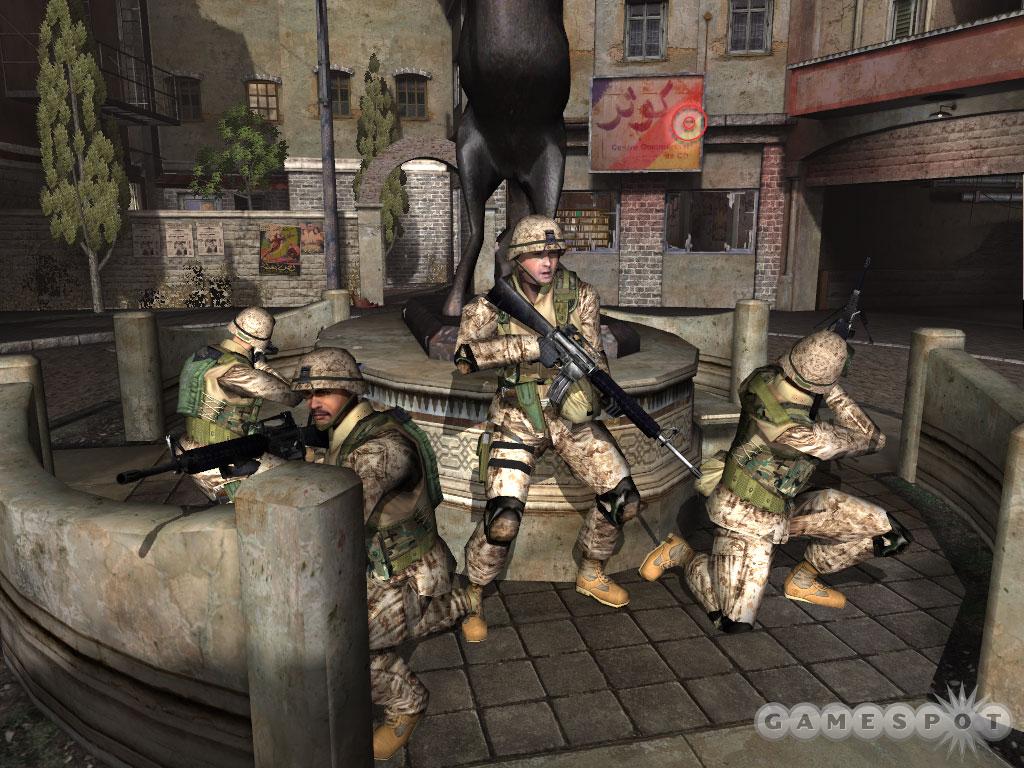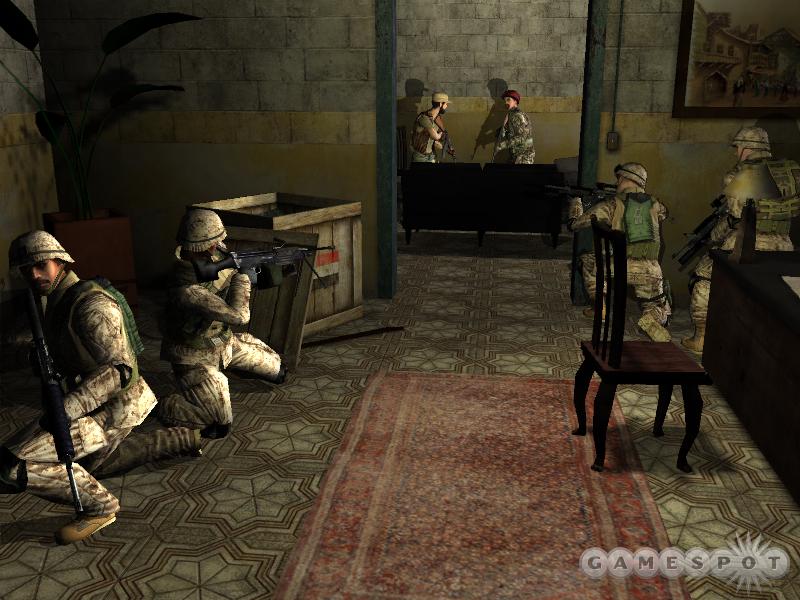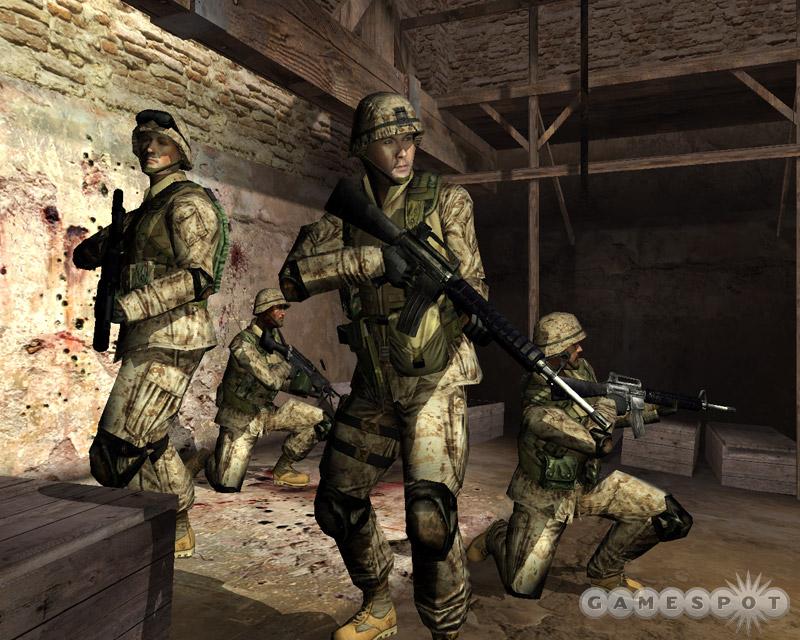Close Combat: First to Fight Q&A
We talk to the president of developer Destineer to find out about the upcoming game being created in association with the US Marine Corps.
Close Combat: First to Fight is the upcoming squad-based first-person shooter from publisher The Gathering. The game is being developed by Destineer Studios, a fledgling studio whose roster of employees consists of vets from Atari, Bungie, and Electronic Arts, among others. The action title's development is being directed by active-duty US Marines to give it an extra layer of depth and relevance to modern combat tactics. We recently had the opportunity to talk to Destineer president Peter Tamte to find out more about this promising title.
GameSpot: What was the impetus behind this project? Who created the initial concept?

Peter Tamte: It was a joint effort between three parties: the Marine Corps--our partner in the project--Atomic Games, and us. It started when Atomic (creators of the very popular, original Close Combat series) became aware of a specific Marine Corps first-person-shooter training need while it was developing real-time-strategy simulations for the Marine Corps. After we showed the marines a demonstration of the 3D game engine Destineer had been developing for the past couple of years, the Marine Corps decided to expand the first-person-shooter project to become what it is now.
GS: What's it been like working with marines who are on active duty? What kind of insights have they provided?
PT: It wasn't too long ago that we were watching TV and seeing marines out front in the fastest invasion in modern history. Now these guys are sitting in our offices helping us make a game. Each of these marines has been in combat during wartime, which I'm sure changes your life even more than being shot at.
The best way to describe working with these marines is "profound respect." It's not just because these guys are willing to sacrifice their lives for their country. It's because each of these guys--literally every marine we've met--lives his life, first and foremost, by a set of values. These values govern everything about them.
They've provided insight into just about every area of the game--from tactical movement, to flanking, to combined arms effect, to what their enemies wore, to what it sounds like to get shot at.
I think the most valuable insight we've received from these marines has been the "Ready-Team-Fire-Assist" procedures. These are the formations, movements, and tactics that make a marine fire team very lethal. They're exactly what marine fire teams use right now in Iraq, and they're hugely helpful in giving players' fire teams in the game 360-degree security in intersections, on stairways, when taking down rooms, etc.
GS: First to Fight isn't the first video game developed with the military's support. America's Army and Full Spectrum Warrior both come to mind. What do you think about those games, and how will First to Fight's development be similar or different?
PT: Both FSW and AA are great, authentic games. But they're both very different from First to Fight.

While Full Spectrum Warrior is really a third-person, real-time strategy game, First to Fight is unabashedly a first-person shooter. With First to Fight, you still get the advantage of using authentic military tactics, but you do it from a first-person perspective with a gun in your hand. We think this makes the experience much more personal and much more action-oriented.
And, unlike America's Army, First to Fight is all about leading teams--and the team follows authentic marine tactics. Additionally, besides great multiplayer, First to Fight has a complete single-player campaign. And, in First to Fight, you can call in Cobra attacks, mortars, and tanks against enemies as well.
As important, though, is the way we've modeled human behaviors into First to Fight. The marines believe the driving force of all action in war is the human will. Military strategy should be all about the tactics you use to force your will on your opponent. Unfortunately, most military games don't actually factor the human will into artificially intelligent behaviors. In First to Fight--just like in the earlier Close Combat games--we're modeling morale and discipline for every enemy and friendly character. This means you can use real military tactics, like flanking and combined arms, to defeat your opponents.
Every Marine a Rifleman
GS: How are you designing the early part of the game with regard to training? Will the game provide any sort of boot camp-style training scenario, or will you be thrown directly into live combat?
PT: We definitely promise that there will be no obstacle course! Training will be provided through optional video descriptions of marine tactics, as well as through pop-up instructions during the first mission. We want to get players into the game as quickly as possible, but we also want to give them the advantage of knowing about many of the marine tactics we've learned.

GS: Have the ongoing military operations in Iraq and Afghanistan affected development of the game in a significant way? Are there any security concerns or other considerations you've made?
PT: The biggest effect the ongoing operations in Iraq and Afghanistan have had is that many of the marines who were originally helping us out have recently been redeployed to Iraq (to Fallujah, mostly). So, the Marine Corps has rotated in a group of marines that has just returned from Iraq. These guys have now been taking over with us where the earlier team left off.
We were initially very worried about the security issues of creating a game with authentic marine tactics. But while an enemy can definitely learn some of these tactics from the game, he can't make himself into a marine. He hasn't completed the months and months of hard physical and classroom training. He can't shoot nearly as well. And he certainly doesn't have the marine discipline and values that are so central to the Marine Corps' war-fighting success.
The most valuable thing I think our nation's enemies will learn from First to Fight is that the Marine Corps is made up of smart, tough, elite warriors who are backed by the most awesome firepower in the history of time. And there is literally no price a marine won't pay to accomplish his mission.
GS: Did the development team visit any interesting locations while researching the game? How will research from these visits be integrated into the game, if so?
PT: We visited a lot of Marine Corps bases. A highlight for me, personally, was being in a "shoot-house" while a marine team did a complete building takedown, room by room. To create confusion and to make sure the guys couldn't hear one another, they cranked some heavy-metal music really, really loudly inside the shoot-house.
Many of the rooms had both friendly and enemy silhouettes. The enemy silhouette was always Osama bin Laden. Each silhouette of him had a whole mess of bullet holes perfectly aimed in his chest. (There were no bullet holes on the "friendly" silhouette, by the way.)
GS: What can you tell us about the technology powering the game? Many squad-based tactical shooters are using voice recognition technology. Are there any plans for this in First to Fight?
PT: Destineer has spent two years building its game engine. The engine offers lots of next-generation features, like volumetric shadows (like in Doom 3), normal maps, specularity, and other visual stuff. But some of our most valuable technologies at this point are the team-AI work we've created with the help of the Marine Corps. We have a lot of man-hours invested in this.
We haven't made final decisions about voice recognition yet.

GS: What's been the overall attitude of the United States Marine Corps toward this project? How involved has it been, and what is the decision-making process like?
PT: It's been exceptionally helpful at every turn. We deal with it at all levels, from colonels to privates and from civilians to active-duty soldiers. They get us all the info we need. They send marines just back from combat operations to our offices very, very frequently. They get us onto their bases. They approve things quickly. They deal with us fairly and honestly at every turn.
It seems the only thing they really care about is how great the game will be, and they clear away every obstacle that gets in the way of this. It's great.
GS: Thanks for your time, Peter.
Got a news tip or want to contact us directly? Email news@gamespot.com
Join the conversation